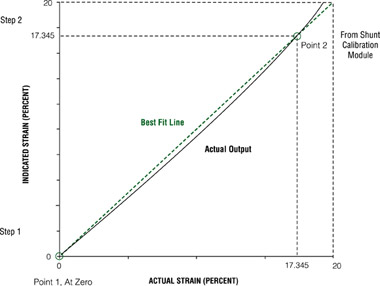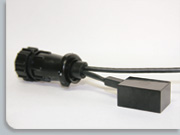SCM Shunt Calibration Modules
Designed to allow Epsilon's extensometer calibration to be easily transferred to a customer's electronics. These are available for any strain gaged extensometer.
What are they?
Shunt calibration modules are a means of transferring Epsilon’s transducer calibration to a customer's electronics, so the output reads correctly.
A very common method of calibrating electronics for use with strain gaged transducers is through a process known as shunt calibration. A resistor connected across one arm of the sensor bridge causes the output to shift. When properly chosen this resistor will simulate an output whose value may be precisely measured and reported.
In order to set the electronics properly, it must read zero when the extensometer is at zero. It also must have the proper amplification (or output slope) so that non-zero readings are correct. Two points are required to accomplish this.
The Shunt Calibration Module works for any of Epsilon’s strain gaged extensometers and with nearly any electronics. As shown in the photos to the right, the module is a simple plug in device containing the shunt resistor. It plugs into a miniature connector extending out the back of the extensometer connector. When plugged in, it shunts across one arm of the sensor and shifts the output to a precise value recorded on the extensometers test certificate.

Calibration requires only these two simple steps:
- Mount the extensometer on a sample. Adjust the output to read zero. This sets point 1 in the example graph above. This is the zero offset or tare.
- Plug in the Shunt Module. Adjust the output readings to precisely the value provided. This sets point 2 in the example. This amounts to adjusting the gain or amplification.
That’s all it takes. This process works for almost every situation. Further information is provided with every module. This works even if the test controls have internal shunt calibration capability. It is useful for digital systems which read in strain directly, as well as older system which read in volts. It may be used for data acquisition systems and stand alone signal conditioning electronics. For controls which only allow for one extensometer, it’s a quick way to switch over to a second.
For systems with multiple calibration ranges, as common in materials testing, multiple Shunt Modules may be ordered, each set for the range specified.
With Epsilon's Shunt Calibration Module, periodic re-calibration of the extensometer may be accomplished by sending the extensometer and module to Epsilon for re-calibration. They also provide a quick means to check that your electronics is properly set and has not shifted.




